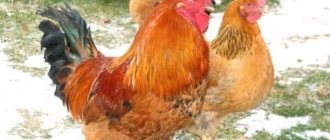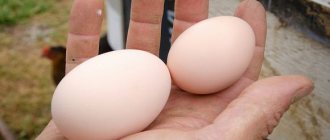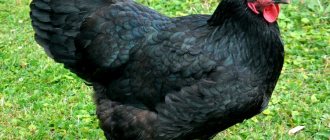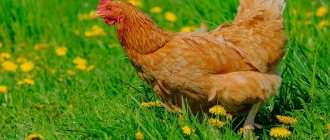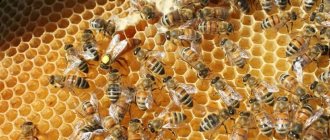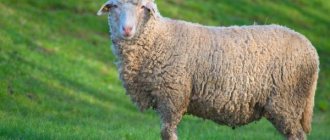Most people who raise chickens have one goal in mind: producing a large number of eggs. Yes, some people raise them for their meat, but raising chickens for their eggs is more common.
But there is one nuance that greatly influences the number of eggs that chickens produce - this is their breed. Yes, no matter how you feed the chicken, or no matter how you care for it, if it is not naturally inclined to produce a large number of eggs, it will not produce them.
For example, there are chickens, the same Japanese Benthams, which practically do not lay eggs at all. Other breeds, the so-called laying hens, lay up to 280 eggs per year, or even more. That is, almost 1 egg per day.
Choosing the right breed will provide you with a steady flow of eggs 365 days a year.
Today we have selected the best breeds of laying hens for your home.
Rhode Island
These are American chickens, which in their homeland are called “dual-purpose birds.” That is, this suggests that Rhode Island can be raised for both meat production and eggs. In European countries, Rhode Island is considered one of the most popular breeds. They achieved such popularity due to their high productivity in terms of egg production and high-quality meat.
Rhode Island chicken breed
Productivity: A young specimen can be expected to produce about 250 eggs per year. Rhode Island eggs are brown in color and medium in size.
Colour: Contrary to the original name, Rhode Island Red, these chickens have brown plumage.
Character: This is a completely independent breed that does not require special attention. Rhode Island chickens are very friendly.
Market or poultry farm
When chickens are bought at one day old, there is not much difference whether it is a domestic bird or a factory one. Since the chicks have just emerged from the egg, they have not yet been exposed to the conditions provided by a poultry farm or backyard farm.
An adult laying hen 3-4 months old, which can be purchased from a private farmer or a large poultry farm, is different. In factory conditions, chickens are guaranteed to receive vaccinations and are accustomed to cage keeping.
Such a bird can easily tolerate cramped quarters, but it is accustomed to eating only feed with synthetic additives and stimulants. This has accelerated her development; she will begin to lay eggs faster, but will also lose her productivity earlier.
In farms and households, laying hens usually move freely. They eat live and green food. Therefore, when buying such a bird on the market for your household, you can be more confident that it will most likely adapt to your conditions and feeding regime.
If we take laying quail as an example, then factory-made ones will be preferable. This is due to the fact that such a quail has definitely received vaccinations and is protected against many diseases. Living conditions in the home and in the factory are practically no different, because laying quails are always kept in standard cages.
Feeding quails at the factory and at a private farmer is the same. It is typical for quails that they will lay eggs only when they consume balanced feed.
Of course, many people make it themselves at home, but it is not much different from the factory one, because in addition to crushed grain from various crops, it also contains calcium and protein supplements with premixes.
Leghorn
The Leghorn is a very old, productive egg-producing breed. Leghorn appeared in Italy and from there, in the 1800s, began to move to various countries around the world. In the 20th century it came to Russia, where it quickly took root. Today it is the most highly productive breed in terms of egg production.
Leghorn chicken breed
Productivity: A normal young Leghorn produces about 250-300 eggs per year. These eggs have a white shell color and medium dimensions.
Color: Leghorns are one of the most unique breeds, having pure white plumage and a large, thick red crest. There are also many Leghorn crosses that can have other shades.
Character: Birds of this breed are very calm, but they also have a serious disadvantage. Leghorns take a very long time to get used to people, being one of the most timid breeds.
Getting used to the house
At first, the chickens will not produce eggs. Moving and leaving their usual environment causes them stress. A sign of stress in chickens is frequent head twitching. Succinic acid in tablets and ascorbic acid tablets will help your poultry become calmer and get used to a new place.
Vitamin C is given for 3-4 days, 4-6 tablets per chicken. Succinic acid is added to birds' drink - ? tablets for 10 chickens. Unusual eating habits can also cause stress. When purchasing, you should ask the seller what the chickens were fed. The transition to other foods should be done gradually.
Chickens need care. Create comfortable conditions for their life, and the result will not be long in coming. Raising chickens is profitable and exciting, and the right choice and careful care of them is the key to success.
Sussex
Like the Rhode Island, the Sussex is a "dual-purpose" chicken, meaning it is used for meat or eggs. The Sussex is the oldest English chicken.
Sussex chicken breed
Productivity: A young Sussex can easily produce up to 250 eggs per year. The color of the eggs can vary from brown to creamy white.
Color: The Sussex breed has several basic different colors. The most common is this: pure white plumage with a black neck and tail.
Character: An incredibly calm breed, from which it is simply impossible to expect trouble. The Sussex is one of the most social breeds. She can even eat grain from her owner's hands.
Kuchin anniversary
Large, high-quality eggs, good productivity, strong bones, resistance to degeneration and the desire of every hen to become a laying hen are not all the advantages of the Kuchinsky Jubilee species. The Kuchinskaya breed got its name because it was bred at the factory of the same name, and the anniversary breed because it was bred for its 25th anniversary. Birds of domestic selection have practically no disadvantages. The Kuchin Jubilee produces large eggs 11 months a year - it does not lay eggs only during molting. The breed's egg production is 200 or more per year.
Kuchinskaya Jubilee - the best domestic layers
A hen is able to hatch up to three dozen eggs at a time, not just once a year, but several.
The Kuchinskaya Jubilee variety is sensitive to overfeeding; as soon as this happens, the number of eggs decreases sharply, and the bird becomes susceptible to diseases. When breeding the Kuchin Jubilee breed, farmers need to take care of feed enriched with proteins and minerals, add fresh herbs, vegetables, ground shells and dairy products. From the first days of life, Kuchinskaya Jubilee in fermented milk products and chopped vegetables. Bran can be added to the chicken diet.
Chickens of the Kuchinsky Jubilee breed are as beautiful as adult chickens
Plymouth Rock
The Plymouth Rock is an ideal choice for people who want a breed that lays approximately 1 egg every 2 days. Plymouthrocks were developed in America in the 19th century. It is a “dual purpose” chicken.
Breed of chickens "Plytumrok"
Productivity: A young and healthy Plymouth Rock lays approximately 200 eggs per year. They can be either small or medium in size. The shell color is light brown.
Color: Most often, Plymouthrocks are gray with white wavy stripes throughout the bird's body.
Character: Plymouthrocks are large chickens that love a free lifestyle. In character they are somewhat reminiscent of Sussexes, being the same social birds that very quickly get used to their owner.
Ancona
The Ancona is a small chicken native to Italy. However, today in Italy this breed is not as widespread as in America or England. This is a freedom-loving chicken, which will find it very difficult to live within 4 walls. Therefore, when keeping this breed, it is necessary to arrange a spacious yard.
Breed of chickens "Ancona"
Productivity: Young representatives of Ancona lay up to 200 eggs per year. They are very small and white in color.
Color: The color of the Ankola is somewhat reminiscent of the Plymouthrock. They also have dark plumage, which is covered with white patches.
Personality: The Ancona is a very difficult breed to care for. This is one of the most timid representatives of chickens, constantly trying to escape from their owner. Because of this, you will have to regularly trim your wings, otherwise the chickens will simply run away to freedom.
Other Features
Pay attention to the general activity of the chicken. If she is cheerful, constantly busy with something, and active, this is a very good sign. Lethargy in chickens is often a sign of illness, and when combined with pale combs, it indicates the presence of chicken mites, which cause anemia and inflammation of the brain.
Among chickens, there is also such a thing as “intersex,” when one individual combines the characteristics of both sexes. This may result in spurs and a rooster-like head with an enlarged ridge. You should not choose such a chicken, because such characteristics are the result of inbreeding and it will not be able to act as a laying hen.
After purchasing, it is better to make sure that the chickens are vaccinated, especially against Salmonellosis. If not, please contact your veterinarian. In this way, you will ensure a long life for your pets and protect yourself and your loved ones.
Barnevelder
Barnevelder are chickens from the Netherlands. This breed is primarily known for its "glossy" plumage.
Breed of chickens "Barnevelder"
Productivity: Juvenile Barnevelders are capable of laying up to 200 eggs per year. They can be small or medium in size with a light brown speckled color.
Color: Barnevelders are mostly black and brown.
Character: Representatives of this breed are very fond of free yards for walking. Like Ancona, they often fly over fences and run away. Therefore, when keeping Barnevelder, it is necessary to monitor the length of their wings.
Dominant
Representatives of the Dominant species actively participate in programs for the production of environmentally friendly products in Switzerland. The Dominant breed is suitable for beginners and experienced farmers: the birds are hardy, tolerate severe frosts and sweltering heat well. Another feature of the species is its unpretentiousness to food. The dominant will extract useful substances from any low-grade mixture. Poultry is strong, with excellent immunity to colds and viruses, and recovers quickly from illnesses with proper care.
Dominant laying hens come in different colors
Dominant hens produce up to 320 eggs in the first year. The weight of one egg is up to 70 grams. You can increase the egg production of chickens to the maximum with a balanced diet - it should contain sufficient amounts of protein and calcium.
Breed Dominant striped
Chicken Dominant is bred commercially and in private households. In the second case, closed mini-aviaries and open-range areas are suitable for breeding.
The dominant blue is not only productive, but also a very beautiful species
The viability of young animals reaches 97 percent. Dominant chickens are immune to colds and easily tolerate high humidity and temperature changes.
The egg sizes of Dominant chickens are impressive
The dominant feeds normally on a variety of feeds, but the productivity of laying hens depends on the type of feed.
Hamburg chickens
Hamburg chickens, as you might guess from the name, come from Germany. Today, Hamburg chickens are one of the most attractive egg-producing breeds. These are light, agile individuals.
Breed of chickens "Hamburg"
Productivity: On average they lay about 200 eggs per year. They can be either small or medium in size. The color is white, with a glossy surface.
Color: The plumage of Hamburg chickens is very similar to the coat of Dalmatian dogs, with their black spots on a white “background”. In addition to the main color, there are Hamburg chickens with other plumage colors.
Character: Hamburg chickens need a lot of space to roam. They cannot live in a small barn or cramped chicken run. In conditions of discomfort, this bird becomes very aggressive.
general characteristics
There are numerous breeds of egg-laying chickens. Despite the extreme diversity of appearance and character, they still have qualities common to the entire group:
- Small size and weight. The body weight of males rarely exceeds 3 kg, and that of females - 2.5 kg.
- Thin bones, close-fitting plumage, large wingspan, often long tail. The comb is usually large.
- The muscle tissue is relatively tough and sinewy, which prevents the use of poultry as meat (specimens that have been culled due to age-related decline in egg production are only suitable for soup).
- Early puberty and high productivity. A healthy laying hen can produce 200 or more eggs per year.
- Lack of maternal instinct (with rare exceptions).
- Long period of egg production. Many chickens of egg breeds and crosses can maintain decent productivity at the age of 3 and even 4 years. On farms that produce food eggs on an industrial scale, laying hens are culled earlier for meat, but for owners of private farms this feature of the birds is of serious importance.
- Excellent consumer qualities of eggs (high shell density, heavy weight, large size, evenness, etc.).
- High metabolic rate, excellent appetite. Mobility and activity.
- Unpretentiousness in food, the ability to live on range or semi-range, making full use of pasture.
- High immunity, allowing you to easily endure not very comfortable living conditions. Good level of offspring survival.
Birds flexibly adapt to different living conditions and are not picky in their choice of food.
Marans
Maranas are another “dual purpose” chicken. Maranas are mainly known for the strange color of their eggshells, which are close to the color of chocolate.
Chicken breed "Maran"
Productivity: Maranas lay up to 200 eggs per year. These eggs are colored a bright dark brown. Egg size is medium.
Colour: Marans are almost entirely black.
Character: Maranas, unlike many other laying hens, do not require much space. They can live peacefully within 4 walls. At the same time, it is worth noting that this is far from a tame chicken that shuns its owner.
Expert advice
Not only the correct choice of laying hens affects their performance, but also the correct maintenance after purchase. First of all, it is worth remembering that for chickens, changing their environment is stressful, and this greatly affects their egg production.
Until the hen gets used to the new chicken coop and the surrounding environment, she will not lay eggs. This period can last about a month. To reduce it, experts advise giving succinic and ascorbic acid.
Changing feed is also stressful for chickens. To avoid this, it is advisable to feed the birds the same compound feed (or regular feed) for the first few days as before, gradually increasing the proportion of the new one.
Orpington
Orpington chickens are very calm and friendly layers. Their productivity is lower than that of the breeds described above, however, this chicken is no less in demand.
Orpington chicken breed
Productivity: Orpingtons lay about 180 eggs per year. They tend to breed during the summer months, which is why they lay far fewer eggs during this time period than the other breeds mentioned on this list.
Color: Orpingtons are golden yellow in color and covered with a very thick layer of feathers.
Personality: Orpingtons are one of the easiest birds to care for. They get along both in a spacious courtyard and in a fairly cramped chicken coop. Also, Orpingtons are very social animals that are not afraid of their owner and can eat grain from his hands.
Income from rare breeds
In addition to stable profits, there is another advantage to this. Chicken breeding as a business using rare breeds of laying hens. I breed Araucans, because a hen and a rooster (a married couple) costs 10-12 thousand rubles for sale, it’s very profitable! Year-round incubation of blue eggs allows us to more than cover all the costs of maintaining other chickens and improving the chicken coop.
In the photo there is a family of a tailless breed: a bearded rooster Sebastian and a gray laying hen Josephine - our nurses.
Some poultry farmers rely on selling unusual chickens. This can be quite a profitable business if structured correctly. Today poultry farmers dream of exotic, decorative, rare hens. Such birds are not cheap, so breeding them will quickly pay for itself.
But there are some nuances
To earn income from unusual breeds, it is important to create ideal conditions for the hens. It's no secret that rare and unusual quons require more attention - they need special care, warmth, and high-quality food
Moreover, to start such a business, a considerable amount of investment will be required - both for the purchase of livestock and for home improvement.
https://youtube.com/watch?v=kyZ_TMKNON8
Redbrough
Despite the fact that Redbro chickens are a dual-purpose bird (meat-egg breeding breed), they are quite productive laying hens. As for weight gain, by the age of 6 months of its life, a Redbro chicken can weigh about 5-6 kg. However, it is worth noting that it is quite difficult to purchase chickens of this breed, since on the market they can pass off other, less promising breeds as Redbro, which, after growing up, will only disappoint the owner.
Productivity: A young Redbro hen can be expected to produce about 170 eggs per year. As they grow older, productivity increases to 300, after which it begins to gradually decline.
Color: The feather color of representatives of this breed is red, which sometimes turns into red-brown. Birds with white plumage may occur, but this is quite rare.
Personality: This is a very calm, peaceful chicken that gets along with other breeds. Redbros love freedom very much, so cage keeping is not suitable for them.
How to choose on the market: what parameters should you rely on when choosing?
You can buy day-old chicks and wait until they grow up to realize that there are more cockerels in the flock than hens. Or you can buy young animals, basing your selection on characteristic exterior features.
Signs of good egg production can be:
- Comb and its color;
- The volume of the abdominal cavity and its softness;
- The distance between the pubic bones (at least 3 fingers of an adult’s hand);
- If the bird is closer to the egg type, then the brow cranial arches are poorly developed and the front part of the head is characterized by weak hair.
When purchasing egg-bred chickens on the market, you should take a close look at the pigmentation of the beak. The more productive the laying hen, the faster it disappears.
Brekel
Brekel chickens are a mysterious breed that is one of the oldest in the world. The exact origin of the Brekels is unknown, but it is believed that this chicken was bred by the Aborigines. At one time, Brekels were a very popular bird in Belgium. The Brekels' second name is Campin.
Productivity: This is a highly productive chicken. You can get about 260 white eggs per year from Brekel. The average egg weight is 60 g.
Color: Most often the bird has a silver color, in which black and white colors are harmoniously combined. But there are also golden-colored Brekels.
Character: This is a rather controversial bird. If we talk about cockerels, then within his flock he is always calm if he is one male. If there is a second cockerel, then frequent clashes are possible. The chickens are much calmer. They do not show aggression, rarely make noise and get along well with representatives of other breeds.
Content specifics
On farms, egg-laying chickens are usually kept on semi-free range. When organizing courtyards and enclosures, it is necessary to take into account the fact that representatives of such breeds are distinguished by the “grace” of their constitution and fly well. Therefore, the fencing of the walking area is made high. The house in which the birds live may not be heated (not every summer resident has the opportunity to build a heated chicken coop), but care must be taken to ensure that the birds are protected from dampness and drafts. The room is equipped with lamps, standard feeders and drinkers, as well as nests (one nest for 5-6 hens) and perches. It is important that there is always a flat container with clean ash in the chicken coop: birds love to “bathe” in it, getting rid of external parasites. Owners of dachas and village farmsteads rarely keep laying hens in cages. For such farms, the optimal option is considered to be a floor-based housing option using deep, permanent bedding based on peat, sawdust, shavings, hay or other similar materials.
When equipping a poultry house, many owners independently make the necessary devices from scrap materials (in the photo - nests from plastic buckets)
The diet of adult egg hens usually consists of whole or crushed grains, wet mash and greens. In the summer, poultry on farms are fed twice a day, since most of the day they are out for a walk. In winter, laying hens should receive food 3-4 times a day, preferably at the same time. In the cold season, the diet is supplemented with fresh vegetables (chopped carrots, pumpkin, zucchini, cabbage leaves), dried herbs (alfalfa, nettle, etc.), sprouted grains and ready-made vitamin and mineral supplements. It is very important to ensure that the feed contains a sufficient amount of animal protein, since its deficiency negatively affects the quality of the eggs.
Throughout the year, chickens are given chalk, crushed shell rock or bone meal: they contain calcium necessary for the formation of eggshells
Loman Brown
This is one of those breeds that almost every farmer has heard of. Loman Brown chickens have a high survival rate (about 98%). Also, representatives of this breed begin to lay eggs very early. Subject to keeping conditions and a normal diet, hens will begin to produce eggs within 5 months after birth.
Productivity: Brown Lomans are record holders in terms of egg production. A laying hen of this breed can be expected to produce 1 egg every day. On average, a Loman Brown chicken produces about 330 eggs per year.
Color: The standard feather color of this breed varies from light brown to dark brown.
Character: These are fairly calm chickens that do not create conflicts and do not try to provoke the farmer. They are phlegmatic about what is happening, and also do not try to escape.
Breeding
During the evolution of egg-laying breeds, the motherhood gene was hopelessly lost for many of them. It can be very difficult to place an active laying hen, so breeders use a “surrogate mother” or an incubator. In the first case, the eggs are placed under a more responsible hen and the offspring are awaited. When incubating breeding, it is recommended to choose incubators with an automatic egg turning mode and a thermostat. A good model for beginners would be the Layer BI-1, which can hold from 36 to 104 eggs, depending on the modification.
The device is equipped with a transparent viewing window located on the top panel, which allows you to monitor the condition of the eggs without opening the lid. In addition, the incubator is equipped with temperature and humidity sensors, operates on a 220 V mains voltage, and in the event of a lack of electricity can run on a battery. The operating temperature is 33-34 degrees, and chicks hatch on day 21.
The hatched chicks are left in an incubator or transferred to a special nursery to dry, after which they are transplanted into a box or box with a newspaper-lined bottom. The air temperature during the first two days should be maintained within 32-35 degrees, on the third day - 28-29 degrees, after which it is gradually reduced to 24 degrees.
Russian white
As you might guess, the homeland of this chicken is Russia. One of the ancestors of the Russian White is the Leghorn, one of the most highly productive breeds. Accordingly, the Russian White inherited high egg production rates from its ancestors.
Productivity: hens begin to produce eggs very early, around 5 months of age. The productivity of the Russian White per year is about 210 eggs.
Color: This chicken has only one color option. And as you might guess from its name, it is white.
Character: This is a very calm bird that does not like to create conflict situations.
Hisex
Hisex is a fairly young cross that was bred in Holland in the 70s. Some of the most highly productive chickens took part in the breeding work: Leghorn (white), Rhode Island and New Hampshire. Two varieties of Highsex were bred: white (white) and brown (brown). The brown one has gained more popularity than the white variety.
Productivity: This is a fairly productive cross. One hen can produce up to 300 eggs per year.
Color: Highsex are brown and white.
Character: The bird has a very calm character and gets along well with other breeds.
Australorp
These chickens were bred in Australia, where they were very popular in the early and mid-19th century and were found on almost all farms. Black Orpingtons were used as the basis for their production.
Characteristic:
- Egg production (per year): 180-220 pcs. (55-65 g).
- Testicle color: brown.
- Laying hen weight: 2.8 kg.
- When they start laying eggs: 120-150 days.
Chickens have a high egg production. The color is black, in the sun it casts green. Blue and white/gray Australorps are also found. The comb is leaf-shaped, the earlobes are bright red. The bird rushes even in winter, but for this it needs additional lighting.
Isa Brown
This is a cross that was bred exclusively to produce eggs. This is a fairly new hybrid that was bred in the Netherlands. In a short period of time, Isa Brown has become a very popular chicken both in Europe and here in Russia. The same popular laying hens Leghorn and Rhode Island were taken as the basis for obtaining the hybrid.
Productivity: The egg production of these chickens reaches 370 eggs per year.
Color: Chickens have brown plumage.
Character: This is a very calm bird that does not tend to enter into conflicts.
How to maintain high egg production
Even if you purchased laying hens, this does not mean that they will consistently lay a lot of eggs.
There are a number of factors that can affect the performance of a particular breed. In particular, these are the bird’s diet, its age and access to daylight. These factors play a vital role in chicken productivity.
Age
Alas, the older the bird, the fewer eggs it lays. And this factor cannot be changed in any way. In the first year of its life, the bird is the most productive. Once a bird reaches the 3-year mark, its productivity rapidly declines.
If your hen laid 250 eggs in the first year, by the third year she will only lay 160 eggs. There's nothing you can do about it.
Nutrition
Chickens need about 20 grams of protein every day for consistent egg production. If their diet does not provide them with the proper amount of protein, then productivity is significantly reduced. Therefore, it is necessary to provide the bird with the proper amount of protein.
When is the best time to buy
Chickens can be purchased as early as April, if a room with heating and bedding is prepared for this. But the fact is that it is very difficult to determine from day-old young animals whether in the future they will turn out to be laying hens with high egg production. In addition, it is no secret that when buying chickens on the market, you can get not future laying hens, but roosters. True, knowing some subtleties, you can figure it out using good lighting, and this can be a powerful (100-150 W) lamp with a reflector. The chicken's cloaca is examined and the genital tubercle is identified. This can be done as early as 15 hours after hatching. Males have a tubercle at the bottom of the cloaca, but females do not. But even having determined that this is a future chicken, no one can guarantee its performance in advance. Therefore, it is necessary to purchase grown-up livestock. It is better to do this in early autumn, since the main features of a good layer will already be visible. When selecting birds to replace old ones, preference is given to young birds bred in early spring. For egg-type chickens, future laying hens should be about 5 months old.
Whether laying hens need a rooster can be found in this article.
